Do-335B-2 "M14": an aircraft with two faces!
Two models, one aircraft!
The idea of depicting one and the same aircraft in two different paint schemes, which the aircraft wore at different times, can be an attractive undertaking in itself from a modelling point of view. However, things get really interesting when the background behind the two paint schemes have exciting stories to tell - and that, I can promise you, is exactly the case with this Do-335 B-2 M-14 with the serial number 230014!
In the following article, I would like to shed light on the fate of the M14 from its completion in November 1944 until its takeover by the French forces in April 1945. A report soon to follow will then deal with the M14's "second life" in French colours. The background to this: Tamiya included the decals for the markings for both looks of the M14 in the Do-335B issue, making this project possible.
One thing first: the many possible designations of a Do-335 can cause confusion. In addition to the type designation, the serial number and the "Stammkennzeichen" - in this case RP+UQ - this aircraft is designated by the abbreviation "M14". This designation goes back to a directive issued in mid-December 1944. Until then, experimental aircraft had been designated with a preceding V, but now the letter M was used as a prefix. The reason was the threat of confusion: although V stood for "Versuch" (test), it could easily be confused with the V in the name of the "Vergeltungswaffen" (retaliatory weapons) held up by propaganda at the time. The change to M for "Muster" was intended to provide clarity. The two sample machines M13 and M14 of the B series were the first examples to be named after the new system.
To the Do-335 B-2, W/No. 230014, M14
The aircraft was produced in Oberpfaffenhofen, Bavaria, in November 1944. As already mentioned, the M14 was designed from the beginning as a prototype aircraft for the new B-version, i.e. for the "destroyer" or heavy day fighter variant of the Do-335. Like the M13, which was produced at the same time, the aircraft had all the characteristics of the planned "destroyer": two 30mm MK 103s with magazines for 70 rounds each were installed in the wings by means of generous aerodynamic fairings, and a third MK 103 could be mounted between the cylinder banks of the front engine as an engine gun. E
This impressive armament was supplemented by the two 20mm MG 151s in the nose, already known from the A-version. For the use of these weapons, the new EZ 42 gyro sight was available in the B-2. Among other things, this analogue computer automatically took into account the aircraft's own speed in order to be able to display an effective lead angle.
The changes were not only external: instead of the two inner 310-litre wing tanks that had given way to the two MK 103s, smaller 220-litre tanks were installed in the outer wing sections. The range could be further increased with two 310 litre drop tanks under the wings. As with the A, there was space internally in a bomb bay to carry either a 500 kilogram bomb load or the equivalent as additional fuel.
The increased overall weight due to the heavy armament necessitated the installation of a larger nose wheel; this was now also rotated 45 degrees during retraction to accommodate in the limited space under the forward DB-603E-1 engine. The shock absorbers of the main landing gear were also strengthened on this version.
Another distinctive feature of the B version is the new, revised shape of the canopy. This now has a characteristic central edge, which undoubtedly enhanced the dynamic and sleek appearance of the Do-335. However, the new design probably had more than just aesthetic reasons: in contrast to the A-version, the front windows of the "destroyer" were now armoured.
The two B-series prototypes M13 and M14 differed only in a few details. For example, the M14 had neither a gun camera in the right wing leading edge nor the ring of a homing device on the back of the fuselage. The M14 was probably never fitted with the third MK 103 machine gun firing through the propeller scar.
Apart from the original Do-335 A, the B version is the only variant of Dornier's outstandingly fast fighter that was actually built-at least in the form of two prototype aircraft. The planned series production of the "destroyer" version could no longer be realised due to the end of the war. In April 1945, the Americans captured both aircraft in Oberpfaffenhofen, and shortly afterwards the M14 was handed over to the French together with the M17, the prototype of a two-seat all-weather fighter equipped with a Neptune radar.
The Allies' interest in the Dorniers "Arrow" was great; accordingly, the new owners subjected their Do-335 to an intensive testing programme. With its new French livery, the M14 was flown in quite varied test flights until 1949 - but that, as mentioned, will be the subject of a separate article.
Two models, one and the same aircraft: Tamiya has made this modeling variety possible with this kit: the box contains the markings of the M14 from 1944/45 as well as from 1945 to 1949. If you have two kits, you can realise this interesting comparison without further effort!
About the kit/the building process
Tamiya's edition of the Do-335 pleased me with all the qualities that have made this kit popular and well-known for years: The perfect fit of the parts is impressive. At one point in the instructions it is made clear that the wing and fuselage must be pushed into each other until a "click" is heard: this is no empty promise and applies - pictorially - to all parts; gaps and trenches are looked for here in vain.
The level of detailing is also of high quality: the parts, which date back to the year 2000, show finely executed and precisely cast structures in all crucial areas. A particular highlight in this respect is the cockpit! To my knowledge, Eduard does not offer an painted etched parts set for further detailing, which to me is another indication of the quality of Tamiya's rendering. I therefore only added the harnesses to the interior, everything else, including the decal for the instrument panel, came out of the box.
The decals included in the kit for the two variants of the M14 are wonderful to work with and do not cause any problems even in the tricky areas. One such problem is on the underside of the air scoop for the rear DB 603, where a decal has to be applied "upside down" in a narrow space on a very curved surface - but thanks to the stability and fineness of the carrier film a nice result was easily achieved.
I still found a little room for detailing: the hydraulic lines on the landing gear legs were added as well as etched harnesses in the cockpit. On the other hand I made the pitot tube completely new. For this, hypodermic needles of different diameters were pushed into each other.
In conclusion I may say that after these building experiences I am happy to join the large community of friends of Tamiya's Do-335; when top kit moulds and an interesting aircraft selection come together, building pleasure and satisfaction are guaranteed!
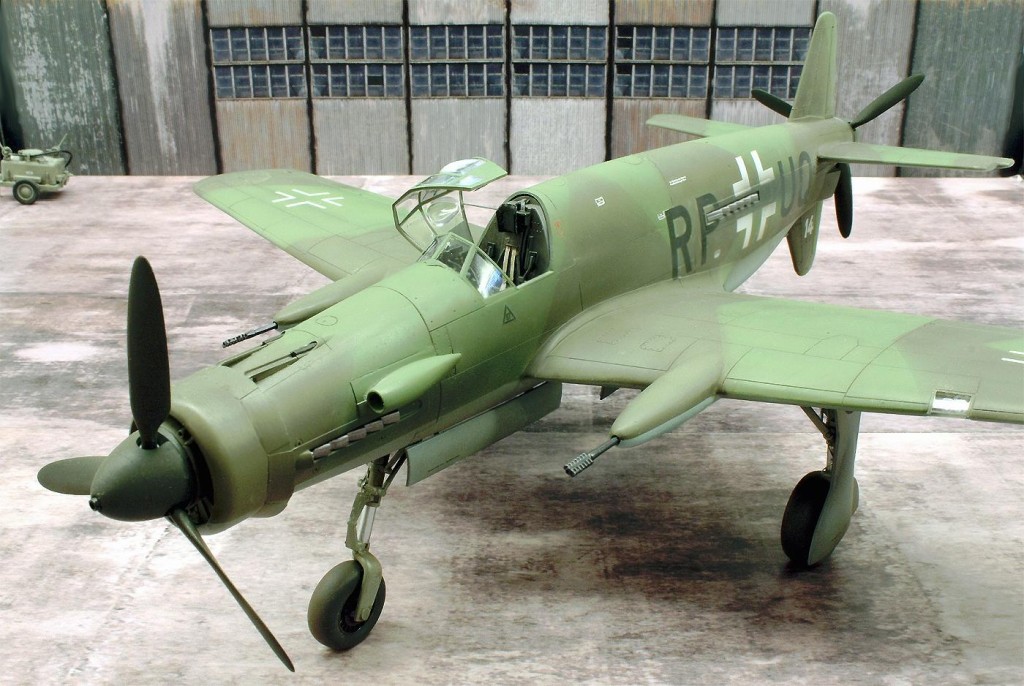
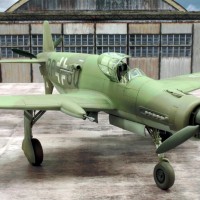
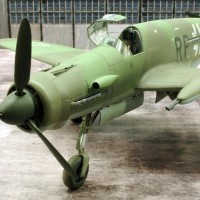
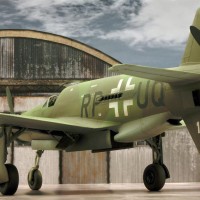
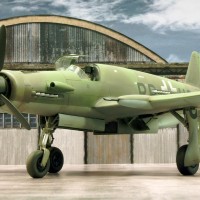
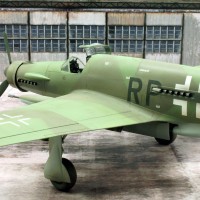
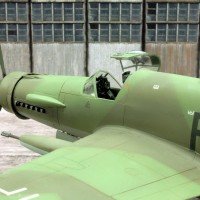
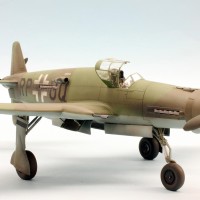
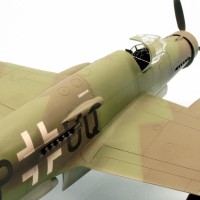

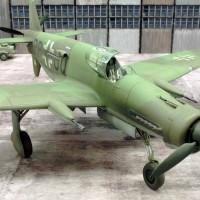
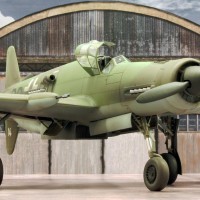

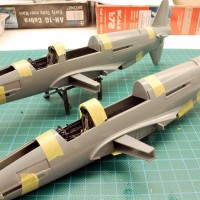
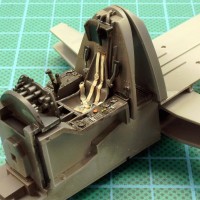
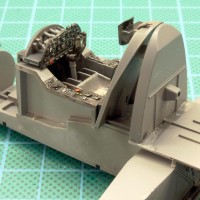
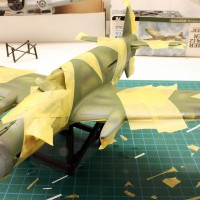
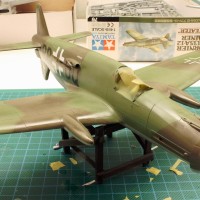
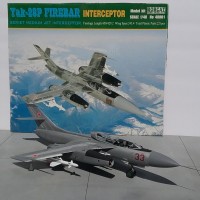
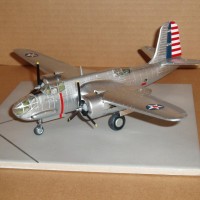
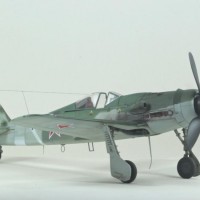
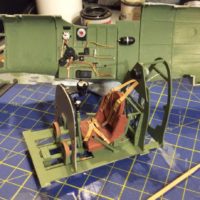
Excellent result, Roland @rosachsenhofer
Great history part as well, thanks for sharing.
Still an aircraft which is missing on my shelf, but with your result it definitely moved up the priority list.
Thank you for your words John!
A wonderful result, Roland! And a very informative article, too!
Thank you my friend!
Awesome! I have the old Monogram classic, you have inspired me to break it out!~
Wonderful, that's also certainly an interesting kit- which I personally don't know.
I always enjoy your posts, and this is no exception, looking forward to seeing the French version as well.
Thank you, those are very motivating words!
Hi Roland your Pfeil looks great!
Right now I´m building one Do 335 A-1. I will follow yours as a good reference to finish mine.
Great work
I am very pleased! Thank you for your words!
Good history and an excellent result with the model.
This is a pleasure - thank you Tom!
Very nice build and great looking results of what really is a really nice kit. You certainly made the most of it!
Your words please me, thank you!
Great looking Arrow!
Thank you Dale!
Very nice!
Thank you Greg!